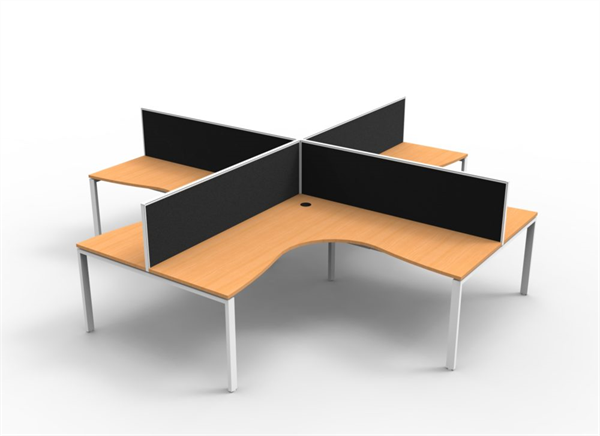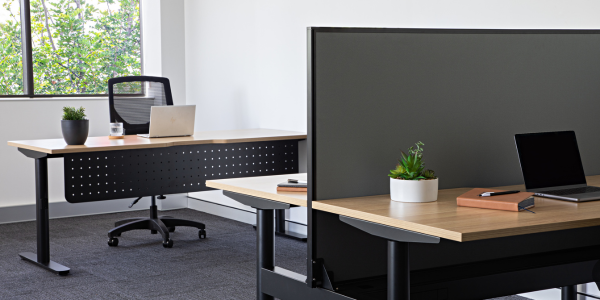There are plenty of terms used when it comes to office furniture, and understanding what they mean can make all the difference when planning your space. Whether you’re completing a full office fit-out or updating key workspaces, knowing the simple differences between desks and workstations can help you choose the right fit for your office configuration and needs. We can help make sense of the terminology, understand how their differences can transform your space and guide you through what to consider when making the best decision for the way you (and your team) work.
How are desks and workstations different?
While both desks and workstations serve the same essential purpose, their configuration can impact the everyday.




Desks are typically standalone units suited to individual work, private offices and customer-facing roles. They offer personal space and privacy, making them ideal for focused roles. These can be found in traditional static height desks and sit-stand height-adjustable.
Workstations, on the other hand, are more modular clusters to encourage collaboration. They’re a smart choice for open-plan environments and growing teams, allowing you to make the most of your floor space. Many workstations include built-in cable management, screening or dividers, and can also be height adjustable to enhance comfort and flexibility.
Do I need a rectangle or an L-shape desk?
When choosing between a rectangular and an L-shape desk, it comes down to the space available and how much surface area you need. Rectangular desks are compact and versatile, making them ideal for smaller offices or individual workstations where only basic equipment like a laptop, monitor, and a document holder is needed. Similarly, L-shaped desks provide additional tabletop space, allowing you to spaciously fit multiple monitors, a laptop, paperwork, and other daily office essentials within reach. They’re a great choice for roles that require multitasking, spreading out documents, or managing several devices simultaneously, such as in administration, legal, finance and creative positions.
Top considerations to make
There are several key factors to consider when choosing the right desks, workstations and shapes for your work environment, which can include:
- Office layout: Open-plan offices often benefit from workstations to encourage collaboration and communication. Private offices may be better suited to individual desks for focused work.
- Available space: Smaller offices may require rectangular desks or compact workstations to maximise floor efficiency, while larger spaces can accommodate L-shape desks or clustered workstations, providing extra surface area and flexibility.
- Number of workspaces needed: For teams needing multiple seats or shared areas, workstations are ideal. Executive spaces are best served by desks, offering personal space and privacy.
- Ergonomics: Height-adjustable desks and workstations, monitor arms, and proper seating help prevent fatigue and “prawn posture”. Ergonomics support comfort, productivity and overall staff well-being.
When it comes to office design and workspace configuration, there isn’t a one-size-fits-all approach, and in our experience, it can be a combination of desks and workstations that create the ideal work environment. By thinking about how your team works, the space available and long-term business goals, you can create an environment that sparks productivity, collaboration and growth.
Could now be the right time to refresh your office space? For decades of knowledge and experience, speak to our resident Office Furniture Specialist, Greg Gibbons to learn how your business can benefit from a new furniture fit-out and the latest style trends. Reach out today at info@sharpoffice.com.au or via 4962 1313.








